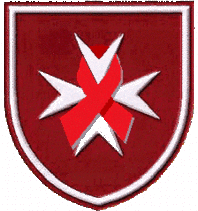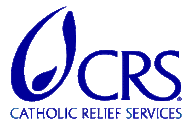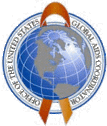Blessed Gérard's Hospice HAART (Highly Active Anti-Retroviral Therapy) programme, a joint project of Blessed Gérard's Hospice and the South African Bishops' Conference has developed and matured over the past year. We are very grateful to the government of the United States of America for giving funds through their President's Emergency Plan For AIDS Relief (PEPFAR) through the Catholic Relief Services Consortium (CRSC) to the Southern African Catholic Bishops' Conference (SACBC) to fund a significant part of the programme costs. Through the admirable work of Sr. Alison Munro O.P., Dr. Malebo Maponyane, Johan Viljoen and the other staff of the AIDS Office of the Bishops' Conference, fourteen functioning AIDS treatment centres have been established throughout South Africa and we are proud to be one of them as "SACBC Site 3".
It was very difficult to find a doctor and nurse willing to come to Mandeni, whose geographical location is often referred to as "the middle of nowhere". So it took until 1 August for a doctor to start her service with us. The nurse, Sr. Elisabeth Coetzer, had started working for us earlier and had already completed the necessary special training in AIDS treatment. The team of Father Gerhard Lagleder, Mrs. Clare Kalkwarf, Dr. Saba Shembe (until November 2004), Dr. Lerato Gabela (since November 2004) and Sr. Elisabeth Coetzer are well coordinated and they have worked endlessly hard to make the programme a success.
We have trained sixteen of our staff as treatment counsellors to enable them to counsel patients, conduct preparatory courses for AIDS treatment and help monitor medication intake.
Blessed Gérard's Care Centre has been accredited by the KwaZulu-Natal Department of Health as an Antiretroviral (ARV) Therapy Treatment Centre. We work in parallel and in collaboration with the South African Government's ARV Therapy Programme. This has also led to us training patients and staff at Stanger District Hospital to support the government in setting up their ARV treatment programme. We also continue to teach the Stanger hospital patients from our area in our HAART preparation courses. Thus, we have developed a very good and beneficial mutual collaboration.
Fortunately, even before our doctor could be employed, we had prepared everything meticulously. We had done a lot of research on how to organise such a programme and all members of the HAART team had undergone specialised training in HIV/AIDS treatment. When the doctor came, the beginning was easy. Within the first month we had the first three patients on ARV treatment. After four months, there were 37 AIDS patients under treatment and 20 more are currently completing their HAART preparation course. The 100 treatment places our donors are willing to pay for will soon be full. From March 2005, we will be able to treat another 100 patients.
This programme requires an absolute willingness on the part of the patient to do whatever is necessary. We expect them to take full responsibility for their own health and well-being. Therefore, all candidates for the HAART programme must complete the 16-hour preparatory course already mentioned above, which, for the sake of receptivity, spreads the lessons over four weeks. They must have a "treatment buddy" who will follow the training with them and then accompany them during the therapy, encouraging and reminding them to take the medicine regularly and without interruption until the end of life; advising them to contact the hospice if they need help. This preparatory course has the following syllabus:
Week 1: Course Section A
Purpose of the training and expectations
Promise of confidentiality
Introduction to the hospice
Branding, self-communication and positive living
Week 2: Course Section B
Basic knowledge of HIV/AIDS & WHO stages
Blood tests (rapid test, CD4 count & viral load)
HIV associated opportunistic infections & cancers
Prevention of pneumonia and meningitis
Week 3: Course section C
HIV/AIDS treatment: Antiretroviral (ARV) therapy
ARV reliable use
ARV side effects
ARV resistance
ARV monitoring
Week 4: Course section D
The exact course of Blessed Gérard's Hospice HAART programme
Creating a treatment plan
There is really a lot to learn and by the end of the course, patients can make a well-informed decision about whether or not to take the ARV treatment and with the guidance of the doctor, they can decide what medicine they can take.
Since we started our ARV treatment programme, our workload has increased by leaps and bounds, especially as it is such an intensive and difficult programme, and patient support is of paramount importance. Not only our work, but also our expenses have increased dramatically. The US government, through CRSC and the Bishops' Conference, pays for the drugs, blood tests and some of the staffing and operating costs, but we are left with a large difference that we have to fund through donations.
The HAART programme also incurs large "hidden costs" for stationery, printing, copying, equipping with media for the HAART preparation courses, prophylaxis of opportunistic infections, home visits and home care, training of therapy counsellors, hiring an extra nurse and other caregivers because of the increased number of patients in the hospice, even when patients have to be admitted as inpatients because of opportunistic infections or side effects of the medication.
This is an extremely valuable programme as it allows us to give children back their mothers and parents their children, and fathers to return to their traditional role as breadwinners.



